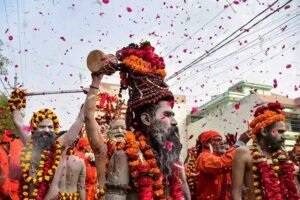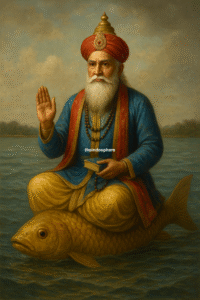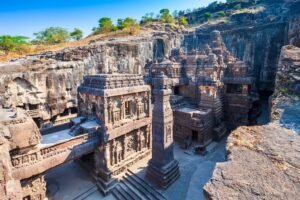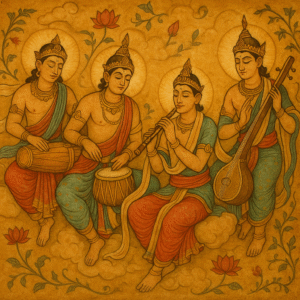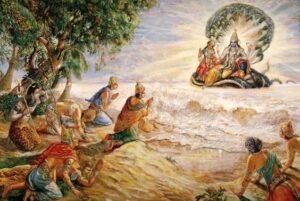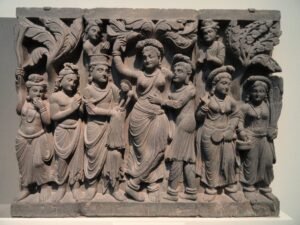The Ramayana holds an unparalleled place in Indian culture and religion, shaping art, dance, theater, and literature for centuries. Its influence extends beyond India, reaching across Asia, where it has been adapted into local traditions and artistic expressions. Festivals like Diwali and Ram Navami, rooted in events from the Ramayana, continue to be celebrated with fervor, keeping the epic alive in modern religious and cultural practices. The characters of Rama, Sita, and Hanuman are revered as models of virtue and devotion, and their stories are passed down through temple rituals, folk performances, and devotional literature.
The Ramayana in Indian Art, Dance, and Theater
The Ramayana has inspired numerous forms of artistic expression in India, ranging from visual art to classical and folk performances:
- Art: Scenes from the Ramayana are vividly depicted in temple murals, miniature paintings, and sculptures across India. Artists have long used the epic’s characters and stories as subjects in traditional styles such as Pattachitra (Odisha), Madhubani (Bihar), and Tanjore paintings (Tamil Nadu). These artworks often serve devotional purposes, narrating episodes from the life of Rama, Sita, and Hanuman.
- Classical Dance: The Ramayana is frequently dramatized in classical Indian dance forms, including Bharatanatyam, Kathak, and Odissi. Dancers bring the epic to life, using intricate gestures (mudras), facial expressions, and movements to portray key characters like Rama, Sita, Ravana, and Hanuman. Each dance form highlights different aspects of the story while adhering to traditional techniques.
- Theater: Regional theater forms such as the Ramlila in North India, Yakshagana in Karnataka, and Kathakali in Kerala are deeply connected to the Ramayana. These performances often take place during festivals like Dussehra and Diwali, where actors and dancers depict the epic’s most dramatic episodes. For example, in Ramlila, episodes from Rama’s life are enacted in open-air stages, concluding with the symbolic burning of Ravana’s effigy, representing the victory of good over evil.
Festivals Celebrating the Ramayana
Several major festivals in India are rooted in the events of the Ramayana, commemorating its key moments and characters:
- Diwali: The festival of lights, Diwali, is perhaps the most widely celebrated event connected to the Ramayana. It marks Rama’s triumphant return to Ayodhya after defeating Ravana and completing his 14-year exile. The lighting of oil lamps during Diwali symbolizes the victory of light over darkness and the return of prosperity and goodness.
- Ram Navami: Celebrating the birth of Lord Rama, Ram Navami is observed with religious ceremonies, fasting, and recitations of the Ramayana in homes and temples. In many parts of India, processions and performances reenact scenes from Rama’s life, emphasizing his role as a symbol of Dharma and righteousness.
- Dussehra: Dussehra commemorates Rama’s victory over Ravana, symbolizing the triumph of good over evil. Effigies of Ravana, along with those of his brothers, are burned in grand ceremonies across India, accompanied by fireworks, music, and dramatizations of the final battle from the Ramayana. In North India, this festival also features elaborate performances of the Ramlila.
The Ramayana Across Asia
The influence of the Ramayana is not limited to India. The epic has deeply impacted the cultural and religious landscapes of Southeast and East Asia, where it has been adapted into local traditions and art forms.
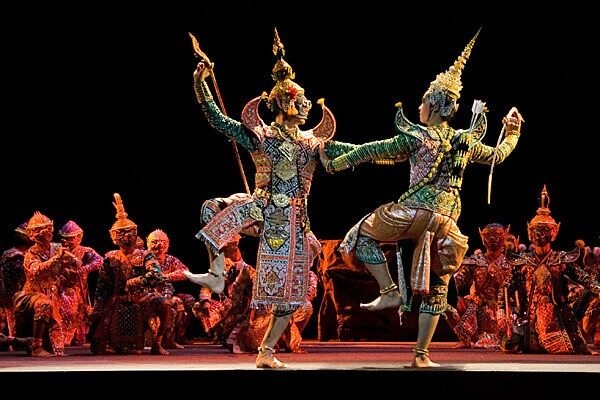
Southeast Asia
In Southeast Asia, the Ramayana has been embraced and retold through local adaptations that blend the epic with regional cultural values:
- Indonesia: Known as the Kakawin Ramayana, the epic plays a vital role in Javanese culture. It is celebrated through traditional dance-dramas like Wayang Wong and shadow puppetry (Wayang Kulit), which depict episodes from Rama’s journey. The epic is also prominently displayed in the relief carvings at the Prambanan temple complex, a UNESCO World Heritage site.
- Thailand: The Thai version of the Ramayana, known as the Ramakien, is central to Thai literature and performing arts. Ramakien dance-dramas are performed during public festivals and at the royal court. The epic is visually immortalized in the intricate murals of the Wat Phra Kaew temple in Bangkok.
- Cambodia: In Cambodia, the Ramayana is known as the Reamker, a key element of Khmer culture. Classical dance performances of the Reamker are an important cultural tradition, and its stories are vividly depicted in the bas-reliefs of the Angkor Wat temple, a UNESCO World Heritage site. The story of Rama’s battle against Ravana is a central theme in Cambodian art.
- Laos: In Laos, the Ramayana is known as Phra Lak Phra Lam. It has been adapted into literature, theater, and dance, becoming a vital part of Laotian cultural heritage. The themes of Dharma and righteousness, drawn from the epic, resonate strongly in Lao society and are often featured in festivals.
East Asia
While the Ramayana has had less direct influence in East Asia compared to Southeast Asia, it has still left a cultural mark in places like China and Japan:
- China: The Ramayana reached China through Buddhist teachings. Though not as widely known as in other parts of Asia, the themes of righteousness, duty, and moral conduct from the Ramayana have influenced Chinese literature and religious texts, particularly in Buddhist stories.
- Japan: In Japan, elements of the Ramayana appear in the Jataka tales, which are stories about the Buddha’s previous lives. Some of these tales share common themes and characters with the Ramayana, reflecting the cultural exchanges between India and Japan during the spread of Buddhism. The epic’s emphasis on ethical conduct resonates with Japanese Zen and Shinto traditions.
The Ramayana in South Asia
The Ramayana also plays a major role in the religious and cultural traditions of other South Asian countries:
- Sri Lanka: The Ramayana has a complex legacy in Sri Lanka, known as the Rama Katha. Despite being Ravana’s kingdom in the epic, the story is a source of cultural pride and moral lessons in Sri Lankan society. Temples dedicated to Rama, Sita, and Hanuman celebrate the epic’s characters, and performances retelling the Ramayana are a significant part of local folklore.
- Nepal: In Nepal, the Ramayana is revered as a sacred text, and its characters are worshipped as deities. Festivals like Ram Navami and Diwali are celebrated with great devotion, with recitations of the Ramayana forming an essential part of religious ceremonies. The epic’s ideals of righteousness and devotion are central to Nepali culture.
- Bangladesh: In Bangladesh, the Ramayana has been adapted into folk literature, especially in rural areas. The epic’s themes of justice, morality, and the battle between good and evil are integral to Bengali culture. The Ramayana continues to inspire Bengali art, theater, and literature, with regular performances and adaptations in local traditions.
Cultural Adaptations and Artistic Expressions
The adaptability of the Ramayana to various cultural contexts is one of its greatest strengths. Across Asia, the epic has been retold and reinterpreted in ways that resonate with local values and traditions:
- Visual Arts: In addition to literature, theater, and dance, the Ramayana has significantly influenced visual arts. The epic is depicted in countless forms, from temple carvings to devotional paintings. The grand bas-reliefs of Angkor Wat in Cambodia and the Prambanan temple in Indonesia are famous examples of the epic’s impact on architecture and sculpture. In India, traditional paintings like Pattachitra and Madhubani also bring scenes from the Ramayana to life.
- Architecture: Temples dedicated to Rama, Sita, and Hanuman across India are pilgrimage sites for devotees. The architectural beauty of temples like those in Ayodhya, Rameswaram, and Chitrakoot highlight the religious significance of the Ramayana and attract millions of pilgrims. In Southeast Asia, the Ramayana is immortalized in the carvings and murals of monumental religious sites like Angkor Wat and Wat Phra Kaew.
cultural phenomenon
The Ramayana is much more than a religious or literary work. It is a cultural phenomenon that has transcended geographical boundaries to influence art, performance, and spirituality across Asia. Through festivals, art, dance, and theater, the Ramayana continues to inspire people with its teachings on virtue, devotion, and the triumph of good over evil. Its adaptability to different cultures and time periods underscores its universal appeal and timeless relevance, making it a living tradition that continues to enrich the lives of millions today.

